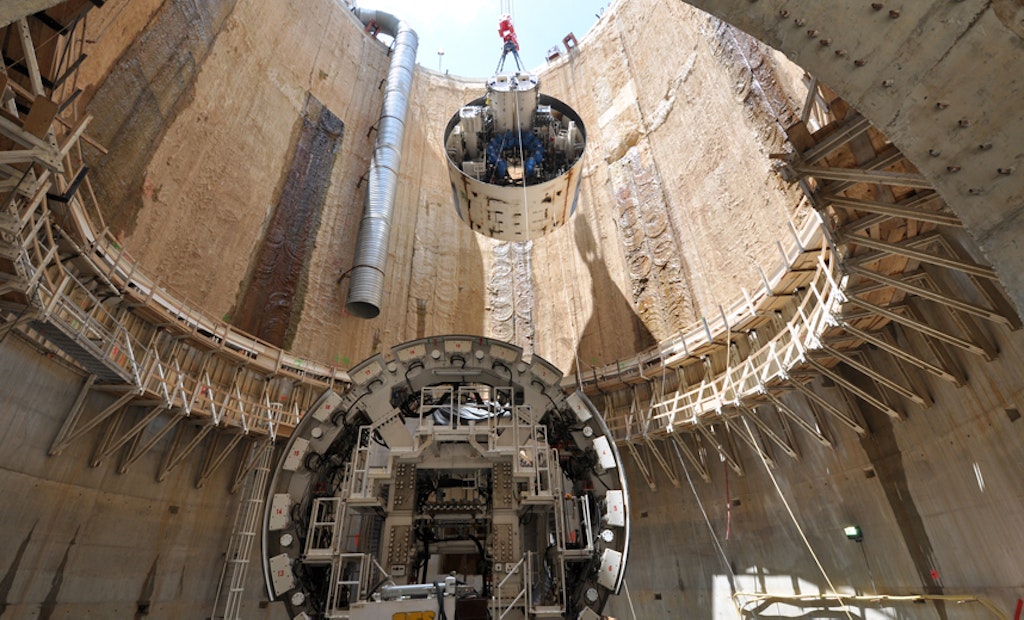
A segment of a tunnel-boring machine is lowered into a tunnel as part of DC Water's Anacostia River tunnel project. (Photo Courtesy of DC Water)
Interested in Stormwater?
Get Stormwater articles, news and videos right in your inbox! Sign up now.
Stormwater + Get AlertsLast year, DC Water opened the first 7-mile segment of its Anocostia River Tunnel system — a massive storage structure for combined sewer overflow that officials now say saved the Anacostia River from 4.5 billion gallons of sewage overflow and 900 tons of trash in 2018.
For decades, the Washington, D.C., river has been unusable for everything that requires contact with the water. “We have an old, antiquated combined sewer system, where about a third of this district has these combined sewers,” says Carlton Ray, director of the Clean Rivers Project for DC Water. “In wet weather, those sewer lines fill up, and 75 to 80 times a year, we actually have raw sewage, or combined sewage that overflows in the Anacostia River, Potomac River and, to a lesser degree, Rock Creek.”
The ongoing tunnel is the largest infrastructure project in DC Water’s history, and it seeks to reverse the decades of damage done by combined sewer overflows during heavy rains. The next part of the tunnel system — called the Northeast Boundary Tunnel — is currently under construction and slated for 2023 completion.
The rain that came to the city on New Year’s Eve was a fitting way to say goodbye to 2018 in D.C., as it was the wettest year on record for the city. DC Water CEO David Gladis says 2018 was the ultimate test for the tunnel system. “In the rainiest year on record, the tunnel, along with green infrastructure, beat all projections for cleaning the river. The improved health of this waterway is bringing a renaissance to the waterfront from housing, retail and sports venues, to recreational and environmental opportunities.”
DC Water Board Chairman Tommy Wells says it’s remarkable the tunnel captured more than 4.5 billion gallons of sewage. “This achievement marks a major milestone towards making the Anacostia swimmable and fishable for generations to come.”
Originally projected to reduce CSOs by approximately 80 percent in an average rainfall year, the system has exceeded expectations by achieving an 89 percent capture rate. Now, instead of flowing into the Anacostia, the combined stormwater and sewage is captured and conveyed to the Blue Plains Advanced Wastewater Treatment Plant for treatment prior to discharge to the Potomac River.
For more details about the project, see our story from last September on mswmag.com.





